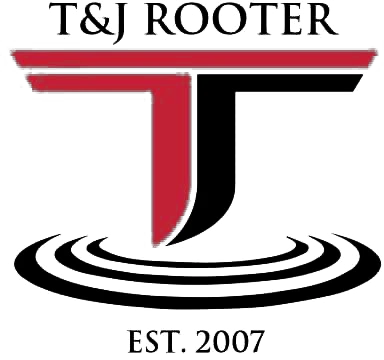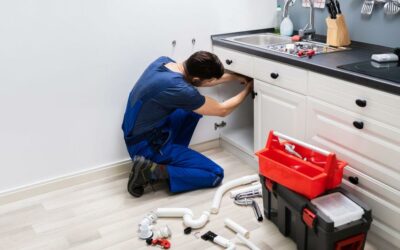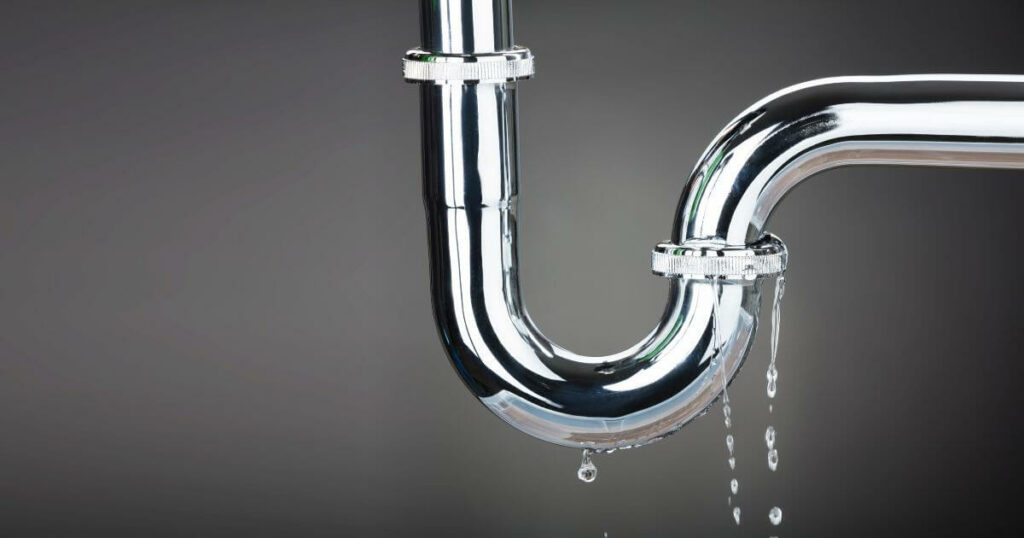
Water leaks can be a homeowner’s worst nightmare, causing extensive damage and leading to hefty repair bills if left undetected. According to the Environmental Protection Agency (EPA), household leaks can waste nearly 1 trillion gallons of water annually nationwide. That’s equivalent to the annual water use of 11 million homes! Hidden water leaks are particularly troublesome, as they can go unnoticed for months or even years, silently wreaking havoc on your home’s structure and your wallet. In this article, we’ll discuss the seven telltale signs of hidden water leaks and provide expert guidance on how to identify and fix them before they cause further damage. To address these issues effectively, T&J Rooter Service offers comprehensive plumbing solutions, ensuring that your home stays safe from the threats posed by unnoticed water leaks.
Hidden Water Leaks Uncovered
As a homeowner, it’s essential to be vigilant about the condition of your plumbing system. Hidden water leaks can occur anywhere in your home, from the walls and ceilings to underneath the foundation. These leaks can be caused by various factors, such as corroded pipes, loose connections, or even shifts in your home’s foundation. Identifying hidden water leaks early on can save you thousands of dollars in repair costs and prevent extensive damage to your property.
In this comprehensive guide, we’ll walk you through the seven most common signs of hidden water leaks and provide expert tips on how to detect and fix them. We’ll also discuss the importance of addressing leaks promptly and when it’s necessary to call in a professional plumber. By the end of this article, you’ll be equipped with the knowledge and tools needed to protect your home from the damaging effects of hidden water leaks.
1. Unexplained Increase in Water Bills
One of the most obvious signs of a hidden water leak is an unexplained spike in your water bills. If you notice that your water bills have suddenly increased without any significant changes in your water usage habits, it’s likely that you have a leak somewhere in your plumbing system.
Here’s an example of how much water can be wasted due to a hidden leak:
| Leak Size | Gallons Per Day | Gallons Per Month |
| 1/32″ | 264 | 7,920 |
| 1/16″ | 1,056 | 31,680 |
| 1/8″ | 4,222 | 126,660 |
As you can see, even a small leak can waste a substantial amount of water over time, leading to a significant increase in your water bills.
To check for leaks using your water meter, follow these simple steps:
- Turn off all water-consuming appliances and fixtures in your home.
- Locate your water meter and record the current reading.
- Wait for 30 minutes to an hour, ensuring that no water is being used during this time.
- Check the water meter again. If the reading has changed, you likely have a leak.
If you suspect a hidden water leak based on your water bills, it’s essential to take action quickly to minimize damage and waste.
2. Damp or Discolored Walls, Ceilings, and Floors
Another common sign of a hidden water leak is visible damage to your walls, ceilings, or floors. When a leak occurs behind a wall or above a ceiling, the moisture can cause the drywall or plaster to become damp, discolored, or even bulge outward.
Some signs of leak-related damage include:
- Peeling paint or wallpaper
- Warped or sagging drywall
- Water stains or discoloration
- Soft or spongy floors
It’s important to note that not all damp or discolored areas are caused by leaks. Poor ventilation, humidity, or condensation can also lead to similar issues. However, if you notice any of these signs in conjunction with other symptoms of a hidden leak, it’s crucial to investigate further.
To inspect for leak-related damage, follow these tips:
- Regularly check your walls, ceilings, and floors for signs of moisture or discoloration.
- Pay close attention to areas around plumbing fixtures, such as sinks, toilets, and showers.
- Use a moisture meter to detect hidden moisture behind walls or under floors.
If you discover damp or discolored areas caused by a hidden leak, it’s essential to address the issue promptly to prevent further damage to your home’s structure.
3. Mold and Mildew Growth
Hidden water leaks create the perfect environment for mold and mildew to thrive. These fungi require moisture to grow and can spread quickly in damp, dark areas. Mold and mildew not only cause unsightly stains and unpleasant odors but also pose serious health risks, particularly for individuals with allergies, asthma, or weakened immune systems.
Some common signs of mold and mildew growth include:
- Visible patches of black, green, or brown growth
- Musty or earthy odors
- Allergy symptoms, such as sneezing, coughing, or itchy eyes
If you suspect that a hidden water leak is causing mold or mildew growth in your home, it’s crucial to take action immediately. Mold can spread rapidly and cause significant damage to your home’s structure and air quality.
To address mold and mildew caused by hidden leaks, follow these steps:
- Locate and repair the source of the leak.
- Remove any water-damaged materials, such as drywall or carpeting.
- Clean the affected area thoroughly with a mold-specific cleaner or a solution of water and bleach.
- Ensure proper ventilation to prevent future mold growth.
In severe cases, it may be necessary to hire a professional mold remediation company to safely remove the growth and restore your home’s air quality.
4. Musty Odors
Hidden water leaks can also cause persistent musty odors in your home. As moisture accumulates behind walls or under floors, it can create the perfect breeding ground for bacteria and other microorganisms, leading to unpleasant smells.
If you notice a musty odor in your home that doesn’t dissipate with regular cleaning, it’s possible that a hidden leak is to blame. These odors are often most noticeable in areas with poor ventilation, such as basements, crawl spaces, or closed-off rooms.
To differentiate between leak-related odors and other causes, consider the following:
- Location: Musty smells caused by hidden leaks are often localized to specific areas of your home.
- Persistence: Leak-related odors tend to linger, even after cleaning or airing out the room.
- Humidity: If the musty smell is accompanied by a feeling of dampness or high humidity, a hidden leak is likely the culprit.
If you suspect that a hidden leak is causing musty odors in your home, it’s essential to locate and repair the leak promptly. In addition to addressing the leak, you may also need to use a dehumidifier or air purifier to remove excess moisture and eliminate any remaining odors.
5. Sounds of Running Water
One of the most telling signs of a hidden water leak is the sound of running water when no fixtures are in use. If you hear the sound of water rushing or dripping behind walls, under floors, or in the ceiling, it’s a clear indication that you have a leak somewhere in your plumbing system.
The specific sound of the leak can help you determine its location and severity:
- Dripping: A slow, steady drip usually indicates a minor leak, such as a loose connection or a small crack in a pipe.
- Rushing: A loud, rushing sound often signifies a more severe leak, such as a broken pipe or a large crack in the plumbing system.
- Hissing: A hissing noise typically indicates a leak in a pressurized water line, such as the main supply line or a faucet supply line.
To locate the source of the leak based on the sound, follow these tips:
- Turn off all water-consuming appliances and fixtures in your home.
- Stand in a quiet area and listen carefully for the sound of running water.
- Use a stethoscope or a glass to help amplify the sound and pinpoint its location.
- Check the area around the suspected leak for other signs of damage, such as damp spots or mold growth.
If you’re unable to locate the source of the leak or if the sound is particularly loud or persistent, it’s best to call a professional plumber to assess the situation and make the necessary repairs.
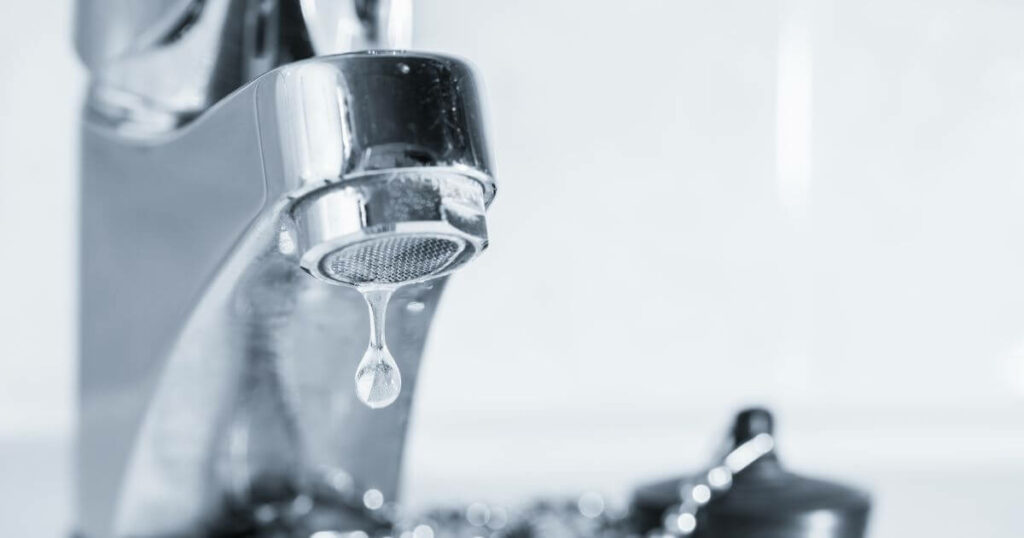
6. Decreased Water Pressure
A hidden water leak can also cause a noticeable decrease in your home’s water pressure. When a leak occurs in your plumbing system, it diverts water away from your fixtures, reducing the overall pressure in your pipes.
Some signs of low water pressure caused by a hidden leak include:
- Weak shower spray: If your shower head produces a weak or inconsistent spray, it could be due to a leak in the shower’s supply line.
- Sluggish faucets: If your faucets take longer than usual to fill a sink or bathtub, a hidden leak may be to blame.
- Toilets that are slow to refill: If your toilet tank takes a long time to refill after flushing, it could be a sign of a leak in the toilet’s supply line.
It’s important to note that low water pressure can also be caused by other factors, such as corroded pipes, clogged aerators, or issues with the municipal water supply. However, if you notice a sudden drop in water pressure that coincides with other signs of a hidden leak, it’s crucial to investigate further.
To test your water pressure and detect leaks, follow these steps:
- Purchase a water pressure gauge from your local hardware store.
- Turn off all water-consuming appliances and fixtures in your home.
- Attach the pressure gauge to an outdoor faucet or a faucet closest to your main water supply.
- Turn on the faucet and record the pressure reading. A normal reading should be between 40 and 60 psi.
- If the reading is significantly lower than normal, you may have a hidden leak in your plumbing system.
If you suspect that a hidden leak is causing low water pressure in your home, it’s essential to locate and repair the leak promptly to avoid further damage and waste.
7. Wet Spots in the Yard
Hidden water leaks can also occur in your home’s outdoor plumbing, such as irrigation systems or supply lines. These leaks can cause wet spots or unusually lush patches of grass in your yard, indicating that water is escaping from the pipes and saturating the soil.
Some signs of outdoor hidden leaks include:
- Soggy or muddy areas in the yard
- Grass that is greener or grows faster in specific spots
- Water pooling on the surface of the soil
- Sinkholes or depressions in the yard
To differentiate between leak-related wet spots and other causes, such as overwatering or poor drainage, consider the following:
- Location: Leak-related wet spots often occur in areas near outdoor plumbing fixtures or along the path of underground pipes.
- Consistency: If the wet spot persists even during dry weather or when the irrigation system is off, a hidden leak is likely the cause.
- Water bill: An outdoor hidden leak can also cause an unexplained increase in your water bills, as the escaped water is still being metered.
To locate the source of an outdoor hidden leak, follow these tips:
- Check your irrigation system for signs of damage or leaks, such as broken sprinkler heads or cracked pipes.
- Use a soil probe or a metal rod to check for areas of soft or saturated soil along the path of your underground plumbing.
- If you’re unable to locate the leak, consider hiring a professional plumber with specialized leak detection equipment.
Addressing outdoor hidden leaks promptly is crucial to prevent water waste, damage to your landscaping, and potential foundation issues.
How to Fix Hidden Water Leaks
Once you’ve identified the signs of a hidden water leak in your home, it’s essential to take action quickly to minimize damage and prevent further waste. While some minor leaks can be fixed with simple DIY solutions, more complex or severe leaks often require the expertise of a professional plumber.
Here’s a step-by-step guide on how to fix common hidden leaks:
- Shut off the water supply: Locate your home’s main water shut-off valve and turn it off to prevent further water damage.
- Identify the source of the leak: Use the tips and techniques discussed earlier to pinpoint the location of the leak.
- Assess the severity of the leak: Determine whether the leak is a simple fix, such as tightening a loose connection, or a more complex issue, like a broken pipe.
- Gather necessary tools and materials: For minor leaks, you may need items such as adjustable wrenches, plumber’s tape, or pipe repair clamps.
- Repair the leak: If you feel comfortable tackling the repair, follow the manufacturer’s instructions or consult a reliable online guide for your specific type of leak.
- Test the repair: Turn the water supply back on and check for any signs of continued leaking. If the leak persists, turn the water off again and reassess the repair.
If you’re unsure about your ability to fix the leak or if the leak is severe, it’s crucial to call a professional plumber. Attempting to repair a complex leak without the proper knowledge or tools can lead to further damage and more costly repairs in the long run.
When choosing a plumber, consider the following factors:
- Licensing and insurance: Ensure that the plumber is licensed and insured to protect yourself from liability in case of accidents or damage.
- Experience: Look for a plumber with extensive experience in leak detection and repair, particularly with hidden leaks.
- Reputation: Read online reviews and ask for references to gauge the plumber’s reputation for quality work and customer service.
- Pricing: Obtain quotes from multiple plumbers to ensure that you’re getting a fair price for the repair work.
Remember, addressing hidden water leaks promptly is essential to protect your home and prevent further damage. Don’t hesitate to call in a professional if you’re unsure about your ability to fix the leak effectively.
Frequently Asked Questions
- How can I determine if I have a hidden water leak? You can determine if you have a hidden water leak by looking for signs such as unexplained increases in water bills, damp or discolored walls, mold and mildew growth, musty odors, sounds of running water, decreased water pressure, and wet spots in your yard. If you notice any of these signs, it’s essential to investigate further and take action to locate and repair the leak.
- Can I fix a hidden water leak myself, or do I need a professional? The answer depends on the severity and location of the leak. Some minor leaks, such as a loose connection or a small crack in a pipe, can be fixed with simple DIY solutions. However, more complex or severe leaks often require the expertise of a professional plumber. If you’re unsure about your ability to fix the leak effectively, it’s always best to call in a professional to avoid further damage and costly repairs.
- How much damage can a hidden water leak cause? Hidden water leaks can cause extensive damage to your home if left undetected and unrepaired. Some potential consequences include:
- Structural damage to walls, ceilings, and floors
- Mold and mildew growth, which can pose serious health risks
- Increased water bills due to wasted water
- Decreased property value due to water damage and mold issues
- Potential foundation issues if the leak is located underground
- How long can a hidden water leak go undetected? Hidden water leaks can go undetected for months or even years, depending on their location and severity. Some leaks, such as those behind walls or under floors, may not show visible signs of damage until significant water has escaped. That’s why it’s crucial to be vigilant about monitoring your home for signs of hidden leaks and to address any suspicions promptly.
- What are the most common causes of hidden water leaks? Hidden water leaks can be caused by a variety of factors, including:
- Corroded or damaged pipes
- Loose connections or fittings
- Cracked or broken fixtures
- Shifts in your home’s foundation
- High water pressure
- Tree root intrusion into underground pipes
- Aging or deteriorating plumbing materials
By understanding the common causes of hidden water leaks, you can take proactive steps to prevent them, such as regular plumbing maintenance and prompt repairs when necessary.
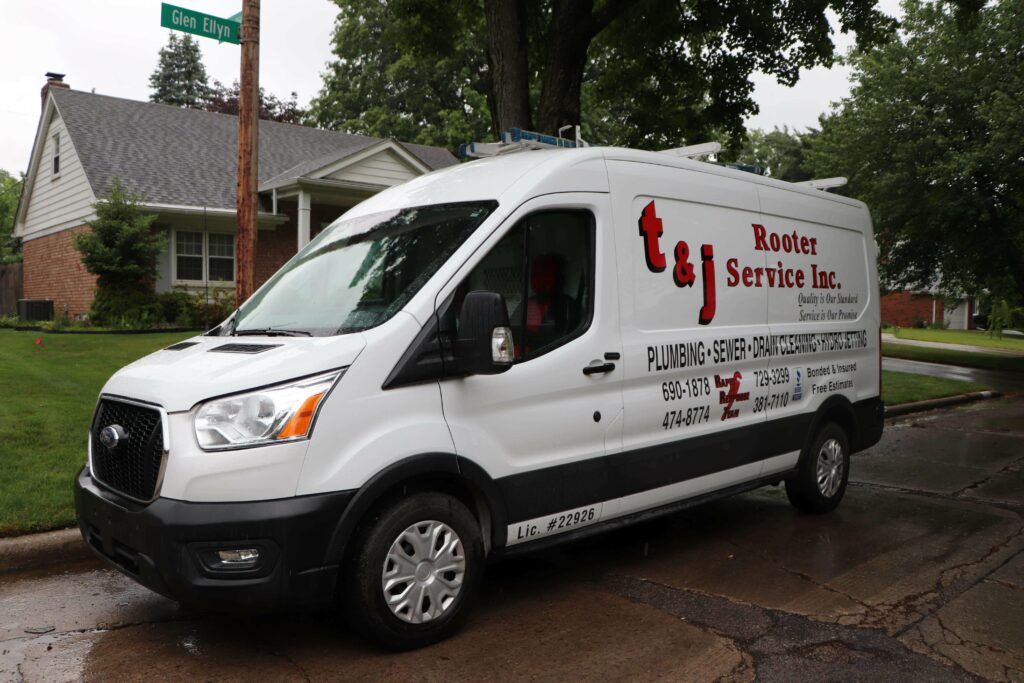
Trust T&J Rooter Service to Fix Your Hidden Leaks
Hidden water leaks can be a significant problem for homeowners, causing extensive damage and leading to costly repairs if left undetected. By familiarizing yourself with the seven telltale signs of hidden leaks and taking prompt action to locate and repair them, you can protect your home and prevent further waste.
Remember, some signs to watch for include unexplained increases in water bills, damp or discolored walls, mold and mildew growth, musty odors, sounds of running water, decreased water pressure, and wet spots in your yard. If you notice any of these signs, it’s crucial to investigate further and call T&J Rooter Service if necessary.
At T&J Rooter Service, we understand the importance of prompt and effective leak detection and repair. Our team of experienced plumbers is equipped with the knowledge and tools necessary to locate and fix even the most challenging hidden leaks. If you suspect that you have a hidden water leak in your home, don’t hesitate to contact us for professional assistance.

